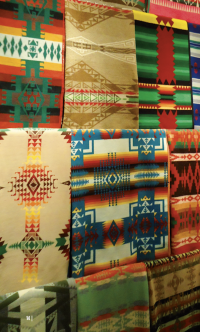Articles & Step By Step Tutorials
Learn new design styles and discover new techniques with these articles from Floral Focus magazines, and step by step tutorials.
The Complexity of Colour - Complexity
by Heather Hammond
Colour is part of our lives, every day, whether or not it is consciously acknowledged, and we may even experience it in our dreams when sleeping.
There is colour in every part of our natural bodies, in the clothing we wear, in housing, furnishings, books and magazines, advertising, manufactured items, in the sky, the sea, and in all nature surrounding us.
For many, colour is taken for granted, but it affects us emotionally, it can be soothing or exciting, it can make things seem warmer or cooler, it can affect our health, it contributes to any number of decisions we make each day, often without us even being conscious of this fact.
Consider the different reactions we have to the red and green colour of traffic lights, the colour of ripe or unripe fruit, even the redness of an angry face or the paleness of that of a sick child.
As we are aware, colour is light. Most animals and plants owe their colours to pigments - haemoglobin, melanin, carotene and chlorophyll being the colours of nature. Colour is pigment but this is still the colour of the light it reflects. Whenever we see colour, we are really seeing coloured light. Pigments have the amazing ability to either absorb or reflect the light that illuminates them. The eyes of higher animals are designed to transform the light they see into the information that is carried to, and recognised by the brain, as colour.
A truly wondrous process!
It is acknowledged that the human eye can perceive a million colour variations. In 1880, Joseph Lovibond became determined to find a way to consistently produce the same colour. He was inspired by the constancy of the stained glass in Salisbury Cathedral, and set about spending years developing successful methods of mixing glass tints.
The Lovibond Tintometer, a simple machine rather like a slide projector, assessed the possible colour permutations at approximately 9,000,000, the number of colours there are. This basic model colorimeter has changed little, and is still in universal use for quality control, now available in many modern electronic models.
In the floral designers' medium - plants colour, and combinations of colour, seem limitless. There is a strong correlation between plants, their flowers, seeds, and fruits, and insects, birds, and even mammals, because of the need for pollination and the distribution of seeds. Plants attract these 'assistants' by colour, form, perfume, etc., but colour is often the major attractant.
Beetles have poor eyesight, so are easily attracted to large conspicuous flowers which are white and highly perfumed, such as Magnolia and water lily. Moths are attracted to white flowers that can be easily located in the dark. Butterflies have good vision and pollinate colours across the spectrum, while flies have complex eyes that are attracted to white, green, red and yellow. Wasps prefer small pink or maroon flowers. but bees are insensitive to red and prefer blue, violet or yellow flowers. The red flowers that bees visit are those that reflect ultraviolet light which the bees can see!
Just these few examples help to show how complex the relationships are between colour and the creatures that perceive colour.
To appreciate colour and to understand colour, adds a dimension to our lives. As floral designers, we are challenged to understand even some of the many aspects of this fascinating subject. We mostly design instinctively with the plant materials we select from our gardens or markets, but it is beneficial to take time occasionally to analyse the choices we make, to ascertain whether the colours chosen are the most appropriate for the design title, the mood we wish to evoke, the setting for the design, or the occasion for which the design is intended.
Having a sound knowledge of colour theory doesn't mean we need to disregard the instinctive colour choices we make, but it does assist with planning for competition or special event designing, to ensure we prepare for the best possible outcome our designing ability allows

Categories
- Step By Step Tutorials
- Colour Tutorials
- Techniques Tutorials
- Innovative Design Tutorials
- Styles Tutorials







